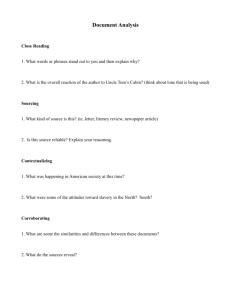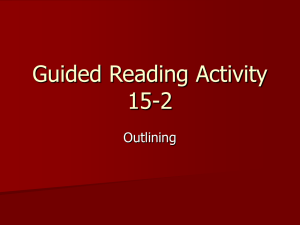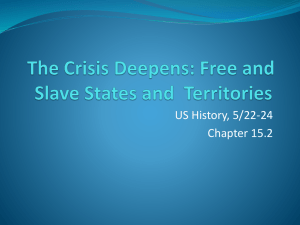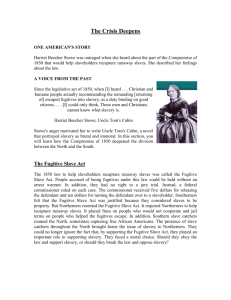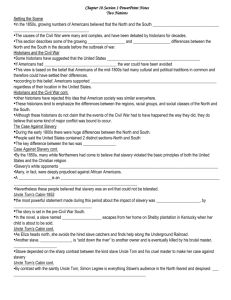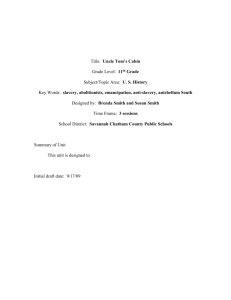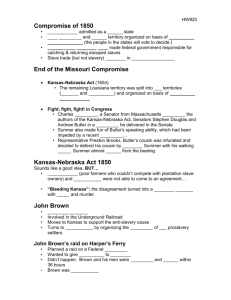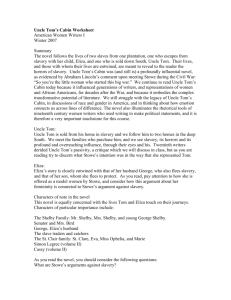The Kansas-Nebraska Act Uncle Tom`s Cabin
advertisement
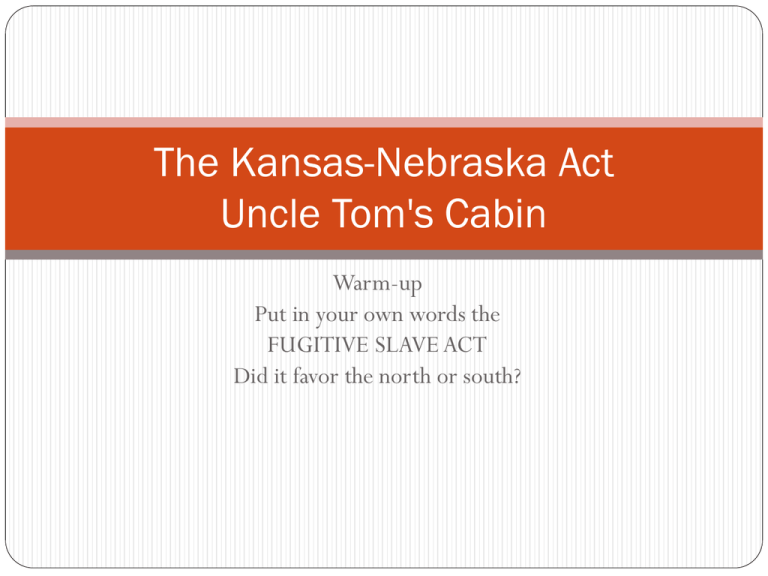
The Kansas-Nebraska Act Uncle Tom's Cabin Warm-up Put in your own words the FUGITIVE SLAVE ACT Did it favor the north or south? The Kansas-Nebraska Act Stephen A. Douglas drafts bill to organize territorial governments for the Nebraska Territory Proposed that it be divided into two territories – Nebraska and Kansas To gain Southern support, Douglas proposes to use popular sovereignty to decide issue of slavery in territories Popular sovereignty = residents vote to decide on an issue The Kansas-Nebraska Act If the bill passed, it would replace the Missouri Compromise Missouri Compromise did not allow people to vote on slavery in territories Southerners were thrilled with this act and excited to repeal the Missouri Compromise The act angered opponents of slavery, but it still passed This act would soon turn Kansas into a battle ground over slavery “Bleeding Kansas” A mad rush of both proslavery and antislavery settlers rushed into the Kansas Territory to vote on territorial legislature Election of 1855 Proslavery settlers outnumbered antislavery settlers Proslavery forces still feared losing the election 5000 Missourians come to Nebraska and vote illegally As a result, Kansas legislature was dominated with proslavery representatives “Bleeding Kansas” Antislavery settlers boycotted the election results, and formed their own government Political authority was in dispute, so both sides armed themselves Violence broke out in Kansas Sack of Lawrence- proslavery men burned & ransacked bldgs Pottawatomie Massacre-abolitionist John Brown retaliates. They dragged five proslavery men from their homes and hacked them to death. Violence continued for three years Meet John Brown. Martyr or Rebel? Uncle Tom’s Cabin Harriet Beecher Stowe published Uncle Tom’s Cabin in 1852 to dramatically portray the moral issues of slavery Harriet Beecher Stowe’s novel… Story focuses on Uncle Tom, an respected older slave, and his life under three owners Two were kind, the third was cruel Book was popular in the North, but Southerners felt the book falsely criticized the South and Slavery Uncle Tom's Cabin was not the first anti-slavery novel, but it was by far the most successful. In the first year over 300,000 copies of her book were sold. In 1856, over two million copies were sold. Her book was translated into 13 different languages. When President Lincoln went to meet her he said, "So you're the little lady that started this big war." Uncle Tom’s Cabin Activity Read the plot overview of Uncle Tom’s Cabin Make a series of drawings to illustrate the story OR
